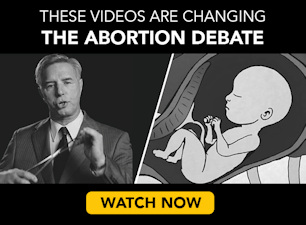Recently, Live Action released a series of videos featuring former abortionist Dr. Anthony Levantino, who has performed over 12,000 abortions. Levantino is now pro-life.
One video shows the most common abortion procedure in the US: a suction D&C or aspiration abortion. As you will see in the video, many of the babies aborted this way are fully formed and recognizable as little human beings. Those who work in abortion facilities have to come to terms with seeing the remains of these children. Levantino explains the procedure below.
[youtube https://www.youtube.com/watch?v=5THDmys8z30]
As the video explains, suction D&C abortions are performed by inserting an abortion instrument called a suction catheter into the uterus. The suction catheter is attached by a long tube to a machine that generates a powerful suction. This suction rips the baby apart and pulls the child down the tube in pieces. The baby ends up in a jar that often has a sac or some kind of material to make straining the blood from the remains easier. In some facilities, the remains of the baby are brought back to a room where workers examine and reassemble the dismembered bodies to make sure nothing has been left behind. A body part or piece of placenta left in the mother can cause an infection. In other locations, the dead children are sent to a pathology lab to be examined.
Sue Hertz wrote about suction D&C abortion in her book Caught in the Crossfire: A Year on Abortion’s Front Line. She describes how one clinic worker chose to examine the remains of the babies.
One [clinic worker], Nina Miller, felt that she should explore the contents of the cheesecloth sack [that held the suction D&C remains] to prepare her for dealing with human tissue in medical school…as a biology major, she was fascinated by the veins and villi, the tiny threads waving from the tiny placenta, of eight-and-nine week POCs [products of conception i.e., aborted babies]. On the human level though, she was horrified by the little arms and legs lying in blood. Each time she asked herself, “What are we doing here?” And each time she went home to reconsider her commitment to helping women end pregnancies they didn’t want,
Miller was obviously troubled by what she saw. The tiny, torn apart bodies of abortion victims made her question her work. She struggled with her conscience. However, there is no indication in the book that Miller ever left as a result of her feelings.
It is sad that Miller saw a conflict between helping the woman and protecting the baby. It seemed that in her mind, as well as in the minds of many workers, the woman can only be helped by killing their child. The pro-life movement, on the other hand, strives to recognize both mother and child as human beings with rights and dignity. Miller probably didn’t know that women have abortions have a 6 to 7 times higher risk of suicide and increased risk of depression. You don’t help a mother by killing her child.
For those who have never worked in an abortion facility, this account show how brutal abortion is. It also shows that workers are human and not completely immune to the horrors they see. Even though many of them are able to silence their consciences, they can’t help but internalize the horror that surrounds them.
If you go to an abortion clinic to sidewalk counsel, you may not know if the worker you see walking to the building is having doubts similar to Miller’s. This is why reaching out to workers – patiently, compassionately, and with respect – can guide them out of the abortion industry and save both them and the preborn children slated to die there. Like Dr. Levantino, anyone can change.








